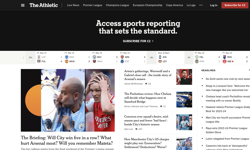For any conference, getting the agenda right is key; securing good speakers and deciding on the right running order. The ABC got this spot on by signing up some very interesting people and leaving Katherine Vander, senior policy officer at the Information Commissioner’s Office until the end. No offence to Katherine, but if she had gone first, she would have cast a long shadow over all the subsequent speakers.
As you might expect at an ABC conference, data was at the heart of all the presentations. The ABC’s Richard Foan kicked off proceedings with Sir Martin Sorrell’s oft quoted line, “what the client wants is a quick and dirty answer.” Such is the pace of change that we can’t wait for every regulatory ‘i’ to be dotted and every ‘t’ to be crossed. Decisions have to be made, and the important thing is not so much the means of measurement as the trustworthiness of the source. And that, said Richard, was where the ABC came in with its vision: “inspiring market confidence by delivering a valued stamp of trust across the media world.” And, Richard elaborated, we should note that the ABC vision specifically excludes the words ‘data’ and ‘measurement’, since the organisation is increasingly focused on process validation; for instance their auditing of IASH members, a process far removed from the nuts and bolts of the traditional print circulation audit.
When you consider that, said Foan, in the near future, every person on the planet will be responsible for two internet connected devices, the sheer volume of traffic data available to both auditors and marketers will be almost infinite – unless of course everyone blocks cookies, in which case there will be virtually none. That 800lb cookie again.
Pete Robins, deputy chair of IPA Digital and founding partner of Agenda 21, described how the typical media buying agency had changed out of all recognition over the past ten years. Staffers in data and technical departments are performing roles that didn’t even exist a decade ago. The days of the mega agency, sorry Sir Martin, might be numbered as clients started to value speed of response and quality of interpretation, and the rise of biddable media reduced the buying clout of the big boys. Also changing is the nature of trading itself as the omnipresence of data means that media buyers can no longer act as gate keepers to the numbers. When your clients have equal access to the figures, the nature of what you offer them has to change. On a more sobering note, whilst the growth of digital might have meant a more level playing field for media agencies, all agencies were faced with the fact that buying digital was ten times more labour intensive than buying press or TV.
The ubiquity of data clearly has implications for media owners too, and Econsultancy’s Ashley Friedlein was there to remind us publishers that we are not quite as data literate as we think we are, certainly in comparison to retailers, who could show us a thing or two when it comes to speed of execution, adopting a genuine individual customer level centricity, offering properly integrated online and offline communications, superior customer service and a much more sophisticated approach to customer segmentation. Ashley showed us a diagram of the ‘conversion funnel’ for Dell Computers and then slide after slide of associated analysis charts, graphs, spreadsheets and the like. From the nervous laughter that rippled around the room at this point, it was clear that conversion funnels, and as importantly, properly plumbed-in analytics packages to home in on areas of funnel leakage, were not being widely used.
Yes, said Ashley, data is complex and challenging, but is also “commercially very exciting”. And to demonstrate this, he showed us his ‘spider’s web’ – a real time graphical representation of traffic hits on his website, with each visitor ‘blob’ colour coded (blue to red, cold to hot) to show their potential and actual value, calculated using a clever, but probably not rocket science, in-house developed algorithm, pulling together, in real time, what is known about the visitor and their path around the site, to determine Econsultancy's next move. “Data driven decision making is where we’re all at”, proclaimed Ashley.
Data is also “liberating” he said. Measurement should mean the end to fuzziness and ambiguity. What particularly got his goat was the constant refrain, “we just don’t know the value of social media.” WHY NOT! Through intelligent use of Google Analytics, a free package, you can exactly measure the value and volume of traffic directed to your site from social media. Stop bleating: the information is there – you just need to measure it.
Zuzanna Gierlinska, director, Microsoft Media Network was up next and she got us thinking about data privacy and the hoodwinking, by us all, of the consumer. In a data landscape that she compared to the wild west, the consumer was unaware of the value of the data trail he left around the internet, and media owners and agencies were colluding in that ignorance, failing to engage in a grown up dialogue with them, through fear that the consumer, once aware of their true value, might withdraw cooperation by blocking cookies or other such unreasonable behaviour. There was a complete lack of transparency and a consequent air of mistrust, which made the situation ripe for government legislation… that 800lb cookie again. What Zuzanna was advocating was a concerted industry-wide initiative to drive transparency, consumer education and choice.
On 14th April, IAB Europe released the ‘Online Behavioural Advertising Framework’ which is a big step in the right direction aimed at giving consumers more information and choice.
But was it too little, too late? Perhaps, because as we all know, on 26th May, the government revised the Privacy and Electronic Communication Regulations to take into account the new EU “cookies law”.
And with the unenviable job of explaining the unexplainable was Katherine Vander, senior policy officer at the Information Commissioner’s Office. The very calm, collected and reasonable Katherine had clearly drawn the short straw. She explained that under the 2003 act, media owners were obliged to provide information about cookies and opportunities for opting out; what was different now was that media owners are now obliged to obtain consent from visitors. “We recognise the challenges of implementing these rules”, she said and that is why implementation is being phased in over twelve months. The ICO would not be telling the industry HOW to comply, but instead would allow different stakeholders the flexibility to offer different solutions in finding ways to comply with the law. The ICO would, she continued, develop and add to its own guidance as “we become aware of innovate solutions and suggestions”. The blind leading the blind? “We are”, she concluded, “keen to hear from you, to help shape the way this develops.”
Well, as you can imagine, that all went down like a lead balloon.
In the Q&A that followed, Ashley Friedlein said: “I wasn’t sure whether it was workable; now I know it isn’t.” In fact all the questions in the Q&A were directed at the ICO executive, who must have been gagging to get to the bar by this time. “Consent doesn’t have to be a tick in a box”, she batted back; “Opt-out can be part of the mechanism of opt-in”, she reasoned. “There are different ways of securing opt-in.”
A literal interpretation of the new rules could spell disaster for the industry, and certainly Ashley’s impressive spider’s web might look a little threadbare in a year’s time and Pete Robins’ previously busy team of data analysts might be looking for new employment.
But it seems to me that the ICO doesn’t want a meltdown of the media sector; what it wants is the industry to engage with it, to find ways of making these new rules workable, for everyone. So the best thing we can do is sit down with the ICO, using initiatives such as IAB Europe’s as a starting point. Given our track record, spelt out by Zuzanna earlier, we can’t afford to adopt a holier-than-thou approach. Some of the principles of the new regulations are clearly right – we just have to find a way of making them work.










